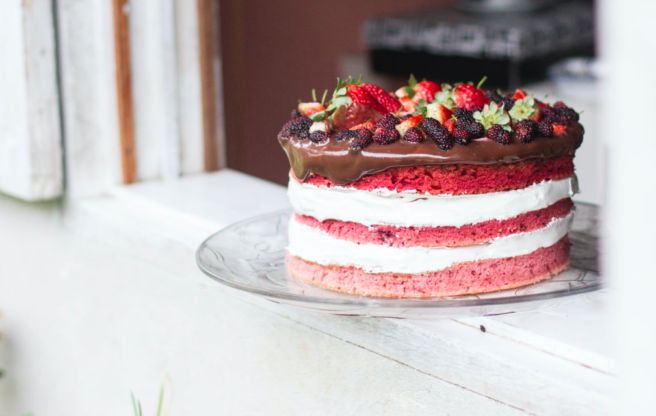
Tips for making the perfect cake
We often associate great home-baked cakes with words like soft, fluffy, and moist. Those words may make you believe that baking is hard, especially if you're baking from scratch. Baking seems like a meticulous process and can seem daunting, but all you need is some faith in yourself and a few tricks up your sleeve. Take a look at our tips for making moist, soft, and fluffy cakes.
1. Measure the Ingredients
Either from a cookbook or websites like Foods Guy, all baking recipes call for precise ingredient measurements. Measure ingredients accurately for a cake that's moist, fluffy, and soft. Imagine the cake you will get if you add too much baking powder; it will rise rapidly but sink in the middle, and it will taste weird.
Bakers use three types of measuring tools: a clear measuring cup with a spout for wet ingredients, cups with graduated rims for dry ingredients, and a set of measuring spoons. Remember that liquid measuring cups measure volume in ounces, not weight. Advanced bakers prefer scales because they measure weight more accurately.
2. Bring Ingredients to Room Temperature
Cake texture is influenced by the temperature of the ingredients. You may have noticed that most recipes call for room-temperature eggs and fat. This is because cold butter doesn't cream well, and adding cold eggs causes the mixture to curdle. This results in a dense or flat cake. If you forget to take them out in time, heat the eggs by soaking them for a few minutes in warm water, and soften the butter slightly in a microwave on a reduced power setting. Ideally, eggs, milk, yoghurt, and butter should all be at room temperature if the recipe calls for them.
3. Make Sure to Use the Right Flour
The type of flour you use affects how your cake rises, bakes, tastes, and crumbles. Among the flours available on the market, cake flour contains the right amount of protein to give your cake structure and create the desired texture. Cake flour is made by mixing flour with cornstarch in order to make it lighter. You can make cake flour at home by replacing 2 tablespoons of flour from a cup of flour with 2 tablespoons of cornflour.
4. Sift the Flour
The sifter will break up any lumps in the flour so you can measure it more accurately. Making batter with sifted flour is easier since it is lighter and easier to mix with other ingredients. Sifting is necessary even if flour is labelled "pre-sifted" on the package. Sift all the dry ingredients (such as flour, cocoa, and powdered sugar, for example) to ensure even distribution.
Sifting flour helps flour incorporate more air into the batter and helps lessen air being pushed out when combined with an egg mixture.
5. The Most Important Step is to Cream
In baking a cake, creaming is the first and most important step. It creates the air needed for leavening in order to produce light and fluffy cakes. During creaming, sugar and fat(s) are whipped together. Most recipes call for creaming the butter with sugar for several minutes, until it becomes light and puffy.
6. Whip the Eggs
Whipping incorporates air into the eggs, so take your time and beat the eggs until they are light and foamy. When the beater is lifted out of the bowl, they should fall in a thick ribbon and look thick and shiny. Cakes that contain properly whipped eggs are fluffy and light. The protein in eggs binds ingredients together and adds both structure and strength to baked goods. Eggs also add tenderness and moisture to baked goods.
7. Fold, Don’t Mix
It is very important to combine the dry and wet ingredients with care. It should only be added a little at a time so the mixture doesn't lose too much air as it is incorporated. Rather than stirring, it is better to fold. Use a broad spatula to drag the dry ingredients through the batter like an oar. Make sure you turn the bowl regularly to ensure that the ingredients are mixed evenly.
8. Fluffy Cake Without Eggs
When it comes to making a cake fluffy without eggs, here is the trick. Make the cake batter with yogurt instead. Yoghurt has natural stabilisers that keep cakes moist. Adding yoghurt to the cake also helps it rise. Chocolate cake made with yoghurt is moist, has a good structure, and has a stable crumb.
9. Make Sure You Don't Overbake
One of the most important tips for keeping cakes soft and moist is not to overbake them. The timings in the recipe should be accurate if you're using the right pan and the right oven. Allow your oven to preheat before baking your cake. To ensure even baking, place the rack in the centre of the oven and rotate the pan after it has begun to set. The raising agent begins working as soon as it comes into contact with any 'wet' ingredients, so bake your batter right away.
If you open the oven door too often, your cakes may collapse. Use the window in your oven door to check the cake. Check for doneness ten minutes before the baking time suggested in the recipe. Cakes are usually ready when they start pulling away from the sides of the pan and a toothpick inserted in the centre comes out clean. If you leave your batter in the oven for too long, the heat can make the cake dry and crumbly.
10. Cool the Cake
Remove the cake from the oven as soon as it is done, unless otherwise instructed. Place the pan on a wire rack and allow the cake to cool for ten to fifteen minutes. Remove the pan and place the cake on a wire rack to cool completely before frosting. You can freeze or refrigerate the cake by wrapping it in plastic after it has cooled completely. Your cake may crack or become soggy if you cool it incorrectly.
Don't be upset if your cake turns dense or rubbery after spending so much time mixing the ingredients. The key to successful baking is attention to detail. It could be a myriad of different factors, such as measurement of ingredients, oven temperature, or improper mixing, that ultimately contribute to your cakes losing their soft, fluffy, and moist texture. Just remember our suggested tips and take your baking skills to the next level.






